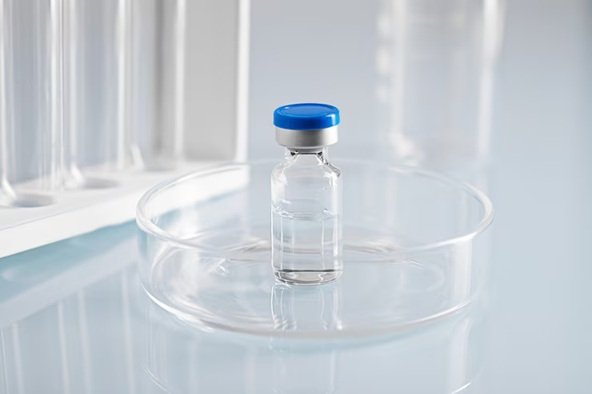
The Role of Glass Vials in Laboratory Work
In any laboratory setting, proper sample storage is crucial for reliable testing and accurate results. Among the various storage options available, clear glass vials remain one of the most preferred choices across industries, from pharmaceuticals to environmental labs. Their transparency, chemical resistance, and compatibility with a wide range of substances make them an essential part of everyday laboratory operations.
Clear glass vials are primarily used for holding liquid or powdered samples, reagents, and standards. Clear vials & accessories serve a key role in chromatography, spectrometry, and chemical analysis. Because they are inert, they don’t interact with most contents stored inside them, ensuring that the sample’s integrity remains intact until it is analysed.
In Singapore, where industries place a premium on precision and compliance, the demand for high-quality lab consumables such as glass vials is growing. Choosing the right vial ensures not only sample safety but also smooth laboratory workflows and accurate data output.
Why Choose Clear Glass Over Other Materials?
While there are alternatives such as plastic or amber glass, clear glass vials offer several advantages that make them ideal for many laboratory procedures. The biggest benefit is visibility. Being able to visually inspect the contents without opening the vial allows technicians to quickly verify volume, clarity, and potential contamination.
Clear glass is also chemically stable and doesn’t leach chemicals into samples, unlike certain plastics. This makes it suitable for sensitive analytical procedures where even trace levels of contamination could impact results. Additionally, clear glass can withstand a wide range of temperatures, making it safe for both refrigeration and high-temperature environments such as autoclaves or heated reactions.
Although amber glass protects from light-sensitive degradation, clear glass is still the go-to option for applications where light exposure is not a concern.
Common Applications of Clear Glass Vials
Clear glass vials are widely used in high-performance liquid chromatography (HPLC) and gas chromatography (GC), where they hold samples for automated or manual injection. These vials are usually fitted with caps and septa that maintain sample purity and prevent evaporation.
In medical and pharmaceutical laboratories, they store biological fluids, drug formulations, and reference standards. Their inert nature is especially important for preserving the chemical stability of pharmaceutical compounds.
In food testing and environmental labs, vials are used to collect and store water samples, chemical extracts, or test solutions. The visual clarity helps in detecting colour changes or particulate formation before analysis begins.
Even in research and academic laboratories, these vials are relied upon for sample handling, titrations, and general solution storage.
Sizes, Sealing Options, and Compatibility
Clear glass vials come in various volumes, commonly ranging from 1 ml to 50 ml or more. The selection often depends on the volume of the sample and the application involved. For chromatography, autosampler-compatible vials are usually 1.5 to 2 ml in size and are designed to fit directly into the equipment trays.
Vial closures are also critical. Screw-top vials, crimp-top vials, and snap-cap vials are the three most common types. Each comes with its own cap and septum combination, designed to ensure a secure seal and minimal evaporation. For instance, crimp-top vials offer superior seal integrity, often required for volatile compounds.
Compatibility with laboratory instruments is another factor to consider. Many modern labs in Singapore use automated systems that require specific vial dimensions and closures to avoid errors or instrument downtime.
Key Features to Look for in Quality Glass Vials
Not all glass vials are created equal. When choosing vials for laboratory use, look for products that meet industry standards for clarity, strength, and chemical resistance. Type I borosilicate glass is considered the gold standard because of its superior thermal and chemical resistance.
Vials should also be free of visible defects such as cracks, bubbles, or uneven walls. These imperfections not only affect the appearance but may compromise the vial’s structural integrity under pressure or during heating.
Proper labelling is another consideration. Clear glass vials with writable surfaces or pre-labelled areas help improve sample tracking and reduce the risk of mix-ups.
Some suppliers offer pre-cleaned or sterilised vials, which can save time and ensure sample purity. In pharmaceutical or clinical labs where regulatory compliance is strict, pre-certified vials that meet ISO or USP standards may be required.
Where to Source Quality Clear Glass Vials in Singapore
Singapore is home to several reliable suppliers offering high-grade laboratory consumables. Many of these suppliers provide a range of glass vials suitable for different applications, from general-purpose lab use to highly specialised analytical work.
When selecting a supplier, consider not only the cost but also the availability of stock, delivery lead times, and after-sales support. A dependable supplier will offer technical assistance, help with compatibility questions, and ensure that products meet the regulatory standards relevant to your industry.
Online platforms and local distributors also make it easier to compare product specifications and place bulk orders. Some suppliers even offer customisation services, such as special vial sizes, printed labels, or unique cap-seal combinations to meet specific lab needs.
Maintenance and Handling Tips
Even though glass is a durable material, proper handling and maintenance are necessary to extend the life of your vials and maintain sample integrity. Always inspect vials before use, and discard any that show signs of wear or damage.
Vials should be cleaned according to their intended use—simple rinsing may be enough for non-critical applications, but for trace-level analysis, more thorough cleaning or sterilisation may be required.
Storage also plays a role. Organising vials in racks or boxes can help prevent breakage and improve workflow. Avoid stacking or placing heavy items on stored vials, especially those with liquids.
Proper disposal practices should also be followed, particularly when dealing with hazardous chemicals. Used vials should be decontaminated or disposed of according to safety regulations to avoid exposure risks.
Conclusion
Clear glass vials are an indispensable part of laboratory operations, offering unmatched clarity, chemical stability, and versatility. Whether you’re working with chromatographic samples, pharmaceutical compounds, or environmental specimens, using high-quality vials ensures that your results remain accurate and reproducible.
In Singapore’s fast-paced scientific and medical landscape, investing in the right laboratory consumables—starting with your glass vials—can make a significant difference in achieving precise, dependable outcomes. Taking time to choose well will enhance not only your lab’s efficiency but also the credibility of your work.




